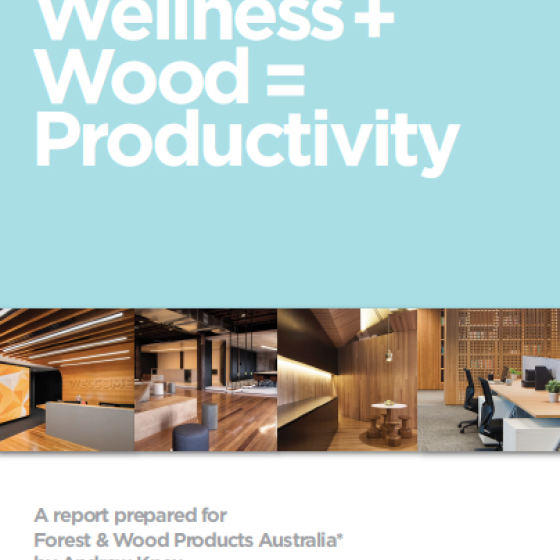Wood: A key plank in the business case for bringing nature into the office
Employers looking to boost worker productivity should consider using more of one of the world’s oldest and most sustainable materials in their office fit-outs: wood.

Download a copy of the free report here.
That’s the takeout from world-first research by strategic market research firm Pollinate and the University of Canberra.
Based on a survey of 1000 indoor Australian workers, the research provides fresh evidence to underpin the business case for biophilia – the principle that exposure to nature increases human wellbeing.
The study paints a bleak picture of workers’ current access to nature at work with less than half (47%) enjoying access to natural light, only two in five (38%) being able to see indoor plants, a quarter (26%) unable to see any natural looking wooden surfaces and almost half (46%) spending less than an hour outdoors on work days.
The study found that the more natural looking wooden surfaces workers could see from their workstation, the higher their workplace satisfaction and wellbeing.
Ahead of an address to the Green Cities conference in Melbourne on 14 March, Associate Professor Jacki Schirmer from the University of Canberra said the results held true even after rigorous analysis that controlled for factors known to impact on the wellbeing of workers such as age, income, gender and workplace culture.
“These results are exciting, for the first time providing solid evidence to support the use of wood as part of bringing nature into workplaces,” she said.
“We are always looking for ways to improve health and wellbeing, and this research points to ways we can achieve that in the places many people spend a lot of their time – the workplace.
“The work has implications for businesses, because a large body of research has shown that workers who are more satisfied with their work and have higher wellbeing have better work productivity, and reduced rates of absenteeism – which means improving worker wellbeing has real benefits for businesses.”
Over 80 per cent of workers (82%) exposed to eight or more wooden surfaces in their workplace reported being ‘satisfied or very satisfied’ with work, compared to over two thirds (69%) exposed to five to seven wooden surfaces and half (53%) with no wooden surfaces.
Employees working in offices with natural wooden surfaces on average also reported higher personal productivity, mood, concentration, clarity, confidence and optimism.
The effect on wellbeing was greatest when wood was used in combination with other natural elements such as plants, water features and natural light.
Associate Professor Schirmer said: “We know it’s good for us to spend time outdoors interacting with nature, but with people spending so much time indoors, there’s increasing recognition of the potential benefits of bringing nature into the workplace and the home.
“The academic world is becoming increasingly switched on to biophilia as an area warranting real research and attention, and some engineering degrees are starting to include it as a subject.
“Importantly, wood is a particularly useful tool for bringing nature into the workplace in situations where it is not feasible to retro-fit other changes, such as increased natural light.
Image: 52 Cubic Wood Office by JOSEP and Atelier Gerhard Haumer, photographer Bernhardf Fedler
